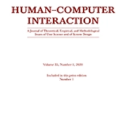Human factors/ergonomics (HFE) standards are not only a useful reference for experienced HFE practitioners but can also provide guidance for organizations that are inexperienced in HFE design practice. HFE standards can give credibility to the value of introducing user centered methods. As computing technologies advance, knowledge of HFE has spread to the computing related work, and the field of human-computer interaction (HCI) has grown rapidly. Accordingly, HCI standards have evolved for guiding practice. There is great deal of literature concerned with the development and practice of international standards (e.g., International Organization for Standardization/ISO) and national (e.g., The American National Standards Institute/ANSI) HFE or HCI standards, but little on the practice of HCI standards at lower levels, such as at the level of enterprise. This chapter will focus on the practice of HCI standards there. It intends to assess the challenges of enterprise HCI standards from strategy, development, and governance perspectives. Specifically, we discuss the practices at Intel Corporation, a high-tech enterprise environment.
翻译:人类因素/人类工程学(HFE)标准不仅是有经验的HFE实践者的一个有用参考,也可以为缺乏HFE设计实践经验的组织提供指导,HFE标准可以使人们相信采用以用户为中心的方法的价值,随着计算机技术的发展,HFE知识已迅速扩散到与计算机有关的工作和人-计算机互动领域,因此,HCI标准已发展成为指导做法,有大量文献涉及国际标准(例如国际标准化/标准化组织)和本国标准(例如美国国家标准研究所/ANSI)的制定和实践,HFE或HCI标准,但很少涉及较低层次(例如企业一级)的HCI标准实践,本章将侧重于那里的HCI标准实践,打算从战略、发展和治理的角度评估企业的HCI标准的挑战。具体地说,我们讨论了英特尔公司(高技术企业环境)的做法。





